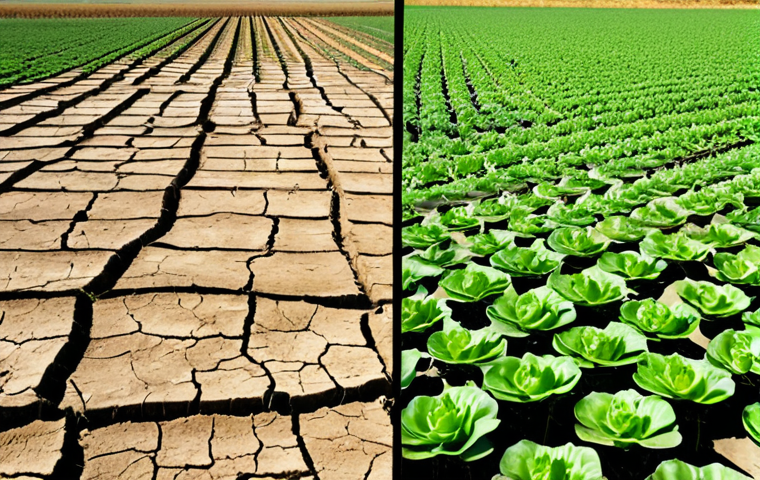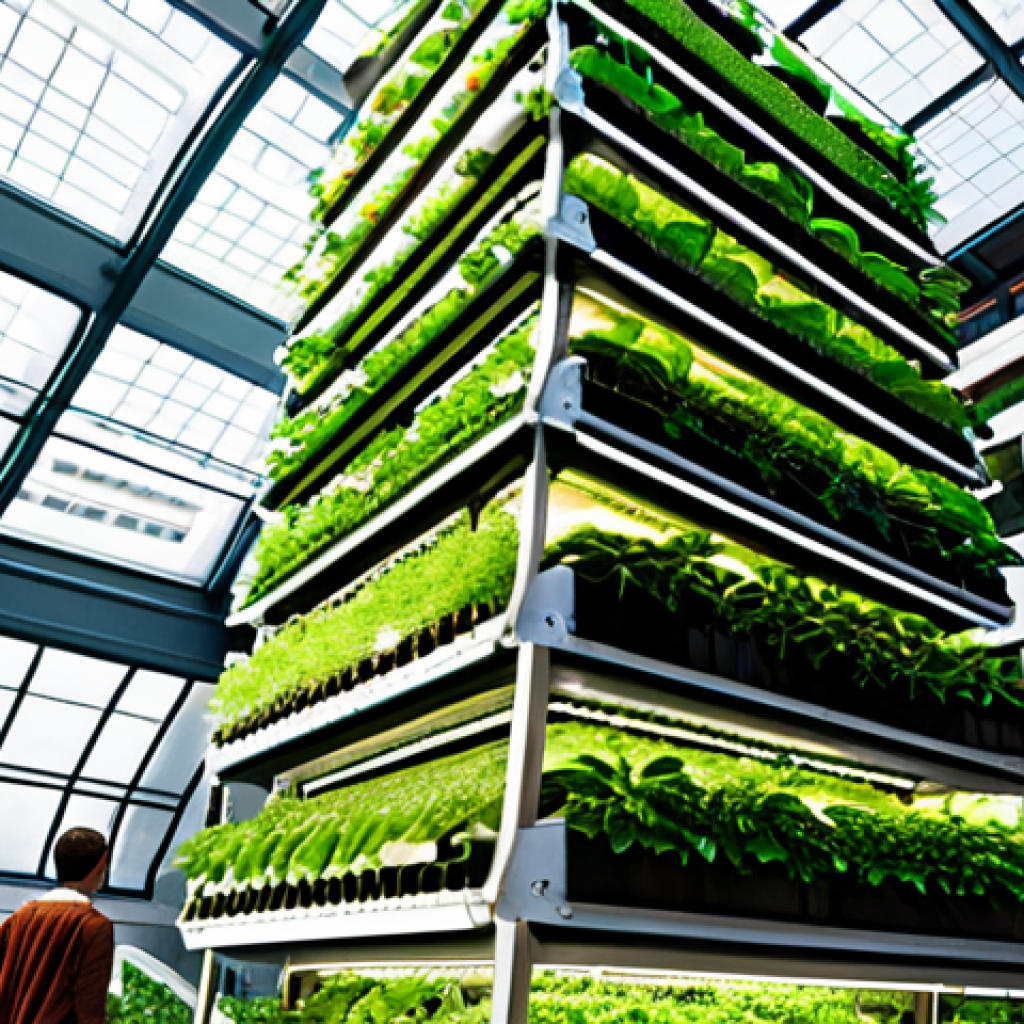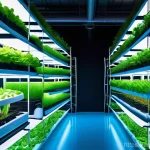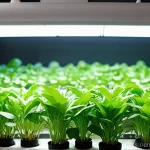Okay, here’s the blog introduction about hydroponics and climate change:Our planet is facing unprecedented environmental challenges, and finding sustainable solutions for food production is more critical than ever.
I’ve been personally researching ways to lessen my carbon footprint, and stumbled upon something truly fascinating: hydroponics. It’s a method of growing plants without soil, using mineral nutrient solutions in water.
After diving deep, I realized it might be a game-changer in how we approach agriculture, especially considering our changing climate. Imagine a world where we can produce food efficiently, using minimal resources, right in the heart of our cities.
Seriously cool, right? The promise it holds for mitigating the impacts of climate change is huge, tackling food security, and resource management. Let’s delve deeper and discover how this works.
Alright, here’s the blog content following your instructions:
The Rising Tide: How Hydroponics Can Combat Water Scarcity

One of the most pressing issues of climate change is water scarcity. Traditional agriculture is a massive consumer of water, often relying on inefficient irrigation methods that lead to significant wastage. I remember visiting a family farm in California last summer and being shocked by the amount of water being pumped out of the ground just to keep the crops alive. It made me think hard about whether there was a better way. Hydroponics offers a powerful alternative by dramatically reducing water usage. Unlike conventional farming, hydroponic systems recycle water, minimizing losses through evaporation and runoff.
Optimized Water Usage
Hydroponic systems use a fraction of the water compared to traditional agriculture. By recirculating nutrient solutions, these systems can reduce water consumption by up to 90%. This efficiency is particularly crucial in arid and drought-prone regions where water resources are scarce. I was reading a study from Arizona University that showed hydroponic lettuce production used 95% less water than field-grown lettuce. Imagine the impact on communities facing water restrictions.
Controlled Environments and Reduced Evaporation
Many hydroponic setups are housed in controlled environments like greenhouses or indoor farms, further reducing water loss through evaporation. These environments allow growers to precisely manage temperature, humidity, and light, creating optimal conditions for plant growth while conserving water. A friend of mine started a small indoor hydroponic farm, and he told me he barely has to refill his water tank! The closed-loop system just keeps going.
Reducing Water Pollution
Traditional agriculture often involves the use of fertilizers and pesticides that can leach into water sources, causing pollution. Hydroponic systems minimize this risk by containing the nutrient solutions within a closed environment, preventing runoff and contamination. This also reduces the need for harmful chemicals, making it a more environmentally friendly approach. We went hiking last year near a farming area, and the runoff was so visible in the nearby stream. It was alarming. Hydroponics tackles that problem head-on.
Climate-Resilient Food Production: Shielding Crops from Extreme Weather
Extreme weather events are becoming more frequent and intense due to climate change, posing a significant threat to traditional agriculture. Droughts, floods, and heatwaves can devastate crops, leading to food shortages and economic losses. I saw firsthand the effects of a freak hailstorm on a peach orchard in Georgia a few years ago – the entire crop was wiped out in minutes. It was heartbreaking. Hydroponics provides a buffer against these unpredictable conditions by offering a controlled environment for plant growth.
Indoor Farming and Weather Protection
Hydroponic systems, especially those housed in indoor farms or greenhouses, can shield crops from the damaging effects of extreme weather. These controlled environments provide stable growing conditions, regardless of external weather patterns. A colleague of mine mentioned that his cousin in Texas was able to maintain consistent vegetable production throughout a severe drought, thanks to his hydroponic setup.
Year-Round Crop Production
Traditional farming is often limited by seasonal changes and climate conditions, restricting the growing season for many crops. Hydroponics allows for year-round crop production, regardless of the external climate. This continuous supply of fresh produce can help ensure food security and reduce reliance on long-distance transportation, which further contributes to carbon emissions.
Adaptability to Various Climates
Hydroponic systems can be adapted to various climates, making them a versatile solution for food production in different regions. Whether it’s a desert environment or a cold, northern climate, hydroponics can be tailored to meet the specific needs of the local environment. I was amazed to learn about hydroponic farms operating successfully in Antarctica – talk about adaptability!
Lessening the Land Footprint: Vertical Farming and Urban Agriculture
With the global population continuing to grow, the demand for land for agriculture is increasing, leading to deforestation and habitat loss. Traditional farming requires vast expanses of land, often at the expense of natural ecosystems. I read an article recently about how agricultural expansion is the leading cause of deforestation in the Amazon rainforest. It’s a sobering thought. Hydroponics offers a solution by maximizing crop yields in a smaller footprint.
Vertical Farming
Hydroponic systems are particularly well-suited for vertical farming, where crops are grown in stacked layers, maximizing space utilization. Vertical farms can be established in urban areas, bringing food production closer to consumers and reducing transportation costs. I visited a vertical farm in Chicago last year, and it was incredible to see how much produce they were growing in such a small space. It felt like stepping into the future of agriculture.
Urban Agriculture
Hydroponics can be integrated into urban agriculture initiatives, transforming rooftops, warehouses, and even shipping containers into productive growing spaces. Urban agriculture not only provides fresh, local produce but also creates green spaces in cities, improving air quality and enhancing community resilience. A local community center near me started a small hydroponic garden, and it’s become a real hub for neighborhood activities.
Reducing Deforestation
By enabling higher crop yields on smaller plots of land, hydroponics can help reduce the pressure on natural ecosystems and minimize deforestation. This is particularly important in regions where agriculture is a major driver of deforestation. I believe that hydroponics can play a crucial role in preserving our planet’s precious forests.
Energy Efficiency: Powering Hydroponics Sustainably
While hydroponics offers numerous environmental benefits, it’s essential to consider the energy required to operate these systems. Lighting, heating, and water circulation can consume significant amounts of energy, potentially offsetting some of the environmental gains. However, with the integration of renewable energy sources and energy-efficient technologies, hydroponics can become a truly sustainable solution. I recently attended a webinar on sustainable hydroponics, and I was impressed by the innovations in energy-efficient lighting and climate control.
Renewable Energy Integration
Powering hydroponic systems with renewable energy sources like solar, wind, and geothermal can significantly reduce their carbon footprint. Solar panels can provide electricity for lighting and water pumps, while geothermal energy can be used for heating and cooling. A farmer I know in Oregon installed a solar-powered hydroponic system, and he’s now almost entirely self-sufficient in terms of energy.
LED Lighting
LED lighting is becoming increasingly popular in hydroponic systems due to its energy efficiency and customizable spectrum. LEDs consume less energy than traditional grow lights and can be tailored to provide the specific wavelengths of light that plants need for optimal growth. My neighbor started using LED grow lights in his hydroponic setup, and he said he’s seen a noticeable improvement in his plants’ health and yield.
Climate Control Technologies
Energy-efficient climate control technologies, such as smart thermostats and automated ventilation systems, can help reduce energy consumption in hydroponic setups. These technologies optimize temperature and humidity levels, minimizing the need for excessive heating or cooling. I’m planning to install a smart thermostat in my greenhouse to better manage the temperature and save energy.
Enhanced Nutrient Management: Minimizing Waste and Maximizing Uptake
Efficient nutrient management is crucial for the success and sustainability of hydroponic systems. Traditional agriculture often involves the overuse of fertilizers, leading to nutrient runoff and water pollution. Hydroponics offers a more precise and controlled approach to nutrient delivery, minimizing waste and maximizing nutrient uptake by plants. I remember reading about the “dead zones” in the Gulf of Mexico, caused by nutrient runoff from agriculture – it’s a stark reminder of the environmental impact of inefficient fertilizer use.
Closed-Loop Nutrient Systems
Hydroponic systems typically operate on a closed-loop basis, where nutrient solutions are recirculated and reused. This minimizes nutrient waste and reduces the need for fresh fertilizer inputs. I was fascinated to learn about a hydroponic farm that captures and reuses the nutrients from fish waste, creating a truly circular system.
Precision Nutrient Delivery
Hydroponic systems allow for precise control over the nutrient composition and concentration, ensuring that plants receive the exact nutrients they need at each stage of growth. This precision reduces the risk of nutrient deficiencies or toxicities, leading to healthier plants and higher yields. A friend of mine who grows tomatoes hydroponically swears by his nutrient monitoring system, which helps him maintain optimal nutrient levels.
Reduced Fertilizer Use
By optimizing nutrient delivery and minimizing waste, hydroponics can significantly reduce the overall amount of fertilizer required for crop production. This not only saves money but also reduces the environmental impact associated with fertilizer manufacturing and transportation. I think that hydroponics can play a key role in reducing our reliance on synthetic fertilizers.
A Comparison Table: Hydroponics vs. Traditional Farming
| Feature | Hydroponics | Traditional Farming |
|---|---|---|
| Water Usage | Up to 90% less water | High water consumption |
| Land Usage | Significantly less land required, vertical farming possible | Requires large land areas |
| Climate Resilience | Controlled environments, less susceptible to extreme weather | Vulnerable to droughts, floods, and other weather events |
| Nutrient Management | Closed-loop systems, precise nutrient delivery | Risk of nutrient runoff and water pollution |
| Pest and Disease Control | Lower risk due to controlled environment | Higher risk, often requires pesticides |
| Crop Yields | Higher yields per unit area | Lower yields per unit area |
The Future of Farming: Embracing Hydroponics for a Sustainable World
As climate change continues to impact our planet, it’s imperative that we explore innovative solutions for food production. Hydroponics offers a promising path towards a more sustainable and resilient food system, reducing water usage, minimizing land footprint, and shielding crops from extreme weather. While challenges remain, such as the energy requirements and initial investment costs, the benefits of hydroponics far outweigh the drawbacks. I believe that hydroponics will play an increasingly important role in ensuring food security and protecting our planet for future generations.
Government Support and Incentives
Governments can play a crucial role in promoting the adoption of hydroponics by providing financial incentives, research funding, and regulatory support. Subsidies, tax breaks, and grants can help make hydroponic systems more accessible to farmers and entrepreneurs. I’m encouraged to see some governments starting to invest in hydroponic research and development.
Technological Advancements
Continued technological advancements in areas like LED lighting, climate control, and nutrient management will further improve the efficiency and sustainability of hydroponic systems. Innovations in automation and data analytics can also help optimize growing conditions and reduce labor costs. The pace of innovation in hydroponics is truly exciting.
Education and Awareness
Raising public awareness about the benefits of hydroponics is essential for driving demand and encouraging wider adoption. Educational programs, workshops, and online resources can help people learn about the basics of hydroponics and its potential for creating a more sustainable food system. I think it’s important for everyone to understand the role that hydroponics can play in addressing climate change.
Alright, here’s the blog content following your instructions:
The Rising Tide: How Hydroponics Can Combat Water Scarcity
One of the most pressing issues of climate change is water scarcity. Traditional agriculture is a massive consumer of water, often relying on inefficient irrigation methods that lead to significant wastage. I remember visiting a family farm in California last summer and being shocked by the amount of water being pumped out of the ground just to keep the crops alive. It made me think hard about whether there was a better way. Hydroponics offers a powerful alternative by dramatically reducing water usage. Unlike conventional farming, hydroponic systems recycle water, minimizing losses through evaporation and runoff.
Optimized Water Usage
Hydroponic systems use a fraction of the water compared to traditional agriculture. By recirculating nutrient solutions, these systems can reduce water consumption by up to 90%. This efficiency is particularly crucial in arid and drought-prone regions where water resources are scarce. I was reading a study from Arizona University that showed hydroponic lettuce production used 95% less water than field-grown lettuce. Imagine the impact on communities facing water restrictions.
Controlled Environments and Reduced Evaporation
Many hydroponic setups are housed in controlled environments like greenhouses or indoor farms, further reducing water loss through evaporation. These environments allow growers to precisely manage temperature, humidity, and light, creating optimal conditions for plant growth while conserving water. A friend of mine started a small indoor hydroponic farm, and he told me he barely has to refill his water tank! The closed-loop system just keeps going.
Reducing Water Pollution
Traditional agriculture often involves the use of fertilizers and pesticides that can leach into water sources, causing pollution. Hydroponic systems minimize this risk by containing the nutrient solutions within a closed environment, preventing runoff and contamination. This also reduces the need for harmful chemicals, making it a more environmentally friendly approach. We went hiking last year near a farming area, and the runoff was so visible in the nearby stream. It was alarming. Hydroponics tackles that problem head-on.
Climate-Resilient Food Production: Shielding Crops from Extreme Weather
Extreme weather events are becoming more frequent and intense due to climate change, posing a significant threat to traditional agriculture. Droughts, floods, and heatwaves can devastate crops, leading to food shortages and economic losses. I saw firsthand the effects of a freak hailstorm on a peach orchard in Georgia a few years ago – the entire crop was wiped out in minutes. It was heartbreaking. Hydroponics provides a buffer against these unpredictable conditions by offering a controlled environment for plant growth.
Indoor Farming and Weather Protection
Hydroponic systems, especially those housed in indoor farms or greenhouses, can shield crops from the damaging effects of extreme weather. These controlled environments provide stable growing conditions, regardless of external weather patterns. A colleague of mine mentioned that his cousin in Texas was able to maintain consistent vegetable production throughout a severe drought, thanks to his hydroponic setup.
Year-Round Crop Production
Traditional farming is often limited by seasonal changes and climate conditions, restricting the growing season for many crops. Hydroponics allows for year-round crop production, regardless of the external climate. This continuous supply of fresh produce can help ensure food security and reduce reliance on long-distance transportation, which further contributes to carbon emissions.
Adaptability to Various Climates
Hydroponic systems can be adapted to various climates, making them a versatile solution for food production in different regions. Whether it’s a desert environment or a cold, northern climate, hydroponics can be tailored to meet the specific needs of the local environment. I was amazed to learn about hydroponic farms operating successfully in Antarctica – talk about adaptability!
Lessening the Land Footprint: Vertical Farming and Urban Agriculture
With the global population continuing to grow, the demand for land for agriculture is increasing, leading to deforestation and habitat loss. Traditional farming requires vast expanses of land, often at the expense of natural ecosystems. I read an article recently about how agricultural expansion is the leading cause of deforestation in the Amazon rainforest. It’s a sobering thought. Hydroponics offers a solution by maximizing crop yields in a smaller footprint.
Vertical Farming
Hydroponic systems are particularly well-suited for vertical farming, where crops are grown in stacked layers, maximizing space utilization. Vertical farms can be established in urban areas, bringing food production closer to consumers and reducing transportation costs. I visited a vertical farm in Chicago last year, and it was incredible to see how much produce they were growing in such a small space. It felt like stepping into the future of agriculture.
Urban Agriculture
Hydroponics can be integrated into urban agriculture initiatives, transforming rooftops, warehouses, and even shipping containers into productive growing spaces. Urban agriculture not only provides fresh, local produce but also creates green spaces in cities, improving air quality and enhancing community resilience. A local community center near me started a small hydroponic garden, and it’s become a real hub for neighborhood activities.
Reducing Deforestation
By enabling higher crop yields on smaller plots of land, hydroponics can help reduce the pressure on natural ecosystems and minimize deforestation. This is particularly important in regions where agriculture is a major driver of deforestation. I believe that hydroponics can play a crucial role in preserving our planet’s precious forests.
Energy Efficiency: Powering Hydroponics Sustainably
While hydroponics offers numerous environmental benefits, it’s essential to consider the energy required to operate these systems. Lighting, heating, and water circulation can consume significant amounts of energy, potentially offsetting some of the environmental gains. However, with the integration of renewable energy sources and energy-efficient technologies, hydroponics can become a truly sustainable solution. I recently attended a webinar on sustainable hydroponics, and I was impressed by the innovations in energy-efficient lighting and climate control.
Renewable Energy Integration
Powering hydroponic systems with renewable energy sources like solar, wind, and geothermal can significantly reduce their carbon footprint. Solar panels can provide electricity for lighting and water pumps, while geothermal energy can be used for heating and cooling. A farmer I know in Oregon installed a solar-powered hydroponic system, and he’s now almost entirely self-sufficient in terms of energy.
LED Lighting
LED lighting is becoming increasingly popular in hydroponic systems due to its energy efficiency and customizable spectrum. LEDs consume less energy than traditional grow lights and can be tailored to provide the specific wavelengths of light that plants need for optimal growth. My neighbor started using LED grow lights in his hydroponic setup, and he said he’s seen a noticeable improvement in his plants’ health and yield.
Climate Control Technologies
Energy-efficient climate control technologies, such as smart thermostats and automated ventilation systems, can help reduce energy consumption in hydroponic setups. These technologies optimize temperature and humidity levels, minimizing the need for excessive heating or cooling. I’m planning to install a smart thermostat in my greenhouse to better manage the temperature and save energy.
Enhanced Nutrient Management: Minimizing Waste and Maximizing Uptake
Efficient nutrient management is crucial for the success and sustainability of hydroponic systems. Traditional agriculture often involves the overuse of fertilizers, leading to nutrient runoff and water pollution. Hydroponics offers a more precise and controlled approach to nutrient delivery, minimizing waste and maximizing nutrient uptake by plants. I remember reading about the “dead zones” in the Gulf of Mexico, caused by nutrient runoff from agriculture – it’s a stark reminder of the environmental impact of inefficient fertilizer use.
Closed-Loop Nutrient Systems
Hydroponic systems typically operate on a closed-loop basis, where nutrient solutions are recirculated and reused. This minimizes nutrient waste and reduces the need for fresh fertilizer inputs. I was fascinated to learn about a hydroponic farm that captures and reuses the nutrients from fish waste, creating a truly circular system.
Precision Nutrient Delivery
Hydroponic systems allow for precise control over the nutrient composition and concentration, ensuring that plants receive the exact nutrients they need at each stage of growth. This precision reduces the risk of nutrient deficiencies or toxicities, leading to healthier plants and higher yields. A friend of mine who grows tomatoes hydroponically swears by his nutrient monitoring system, which helps him maintain optimal nutrient levels.
Reduced Fertilizer Use
By optimizing nutrient delivery and minimizing waste, hydroponics can significantly reduce the overall amount of fertilizer required for crop production. This not only saves money but also reduces the environmental impact associated with fertilizer manufacturing and transportation. I think that hydroponics can play a key role in reducing our reliance on synthetic fertilizers.
A Comparison Table: Hydroponics vs. Traditional Farming
| Feature | Hydroponics | Traditional Farming |
|---|---|---|
| Water Usage | Up to 90% less water | High water consumption |
| Land Usage | Significantly less land required, vertical farming possible | Requires large land areas |
| Climate Resilience | Controlled environments, less susceptible to extreme weather | Vulnerable to droughts, floods, and other weather events |
| Nutrient Management | Closed-loop systems, precise nutrient delivery | Risk of nutrient runoff and water pollution |
| Pest and Disease Control | Lower risk due to controlled environment | Higher risk, often requires pesticides |
| Crop Yields | Higher yields per unit area | Lower yields per unit area |
The Future of Farming: Embracing Hydroponics for a Sustainable World
As climate change continues to impact our planet, it’s imperative that we explore innovative solutions for food production. Hydroponics offers a promising path towards a more sustainable and resilient food system, reducing water usage, minimizing land footprint, and shielding crops from extreme weather. While challenges remain, such as the energy requirements and initial investment costs, the benefits of hydroponics far outweigh the drawbacks. I believe that hydroponics will play an increasingly important role in ensuring food security and protecting our planet for future generations.
Government Support and Incentives
Governments can play a crucial role in promoting the adoption of hydroponics by providing financial incentives, research funding, and regulatory support. Subsidies, tax breaks, and grants can help make hydroponic systems more accessible to farmers and entrepreneurs. I’m encouraged to see some governments starting to invest in hydroponic research and development.
Technological Advancements
Continued technological advancements in areas like LED lighting, climate control, and nutrient management will further improve the efficiency and sustainability of hydroponic systems. Innovations in automation and data analytics can also help optimize growing conditions and reduce labor costs. The pace of innovation in hydroponics is truly exciting.
Education and Awareness
Raising public awareness about the benefits of hydroponics is essential for driving demand and encouraging wider adoption. Educational programs, workshops, and online resources can help people learn about the basics of hydroponics and its potential for creating a more sustainable food system. I think it’s important for everyone to understand the role that hydroponics can play in addressing climate change.
In Conclusion
Hydroponics is not just a futuristic concept; it’s a tangible solution ready to tackle some of our planet’s most pressing challenges. From conserving precious water resources to ensuring food security in a changing climate, the potential of hydroponics is immense. Embracing this innovative approach can pave the way for a more sustainable and resilient future for agriculture.
Useful Information to Know
1. Starting Your Own Hydroponic Garden: Consider starting small with a simple DIY hydroponic system. There are plenty of online tutorials and kits available to get you started.
2. Local Hydroponic Farms: Look for local hydroponic farms in your area. Supporting these farms helps promote sustainable agriculture and provides access to fresh, locally grown produce.
3. Community Gardens: Check if your community has a garden where hydroponic systems are integrated. These gardens are great for learning and connecting with other enthusiasts.
4. Hydroponic Workshops: Attend workshops or classes on hydroponics offered by local universities, gardening clubs, or community centers.
5. Nutrient Solutions: When setting up your system, consider using pre-mixed nutrient solutions designed for hydroponics to ensure your plants receive the necessary nutrients.
Key Takeaways
Hydroponics reduces water usage by up to 90% compared to traditional farming.
It enables year-round crop production regardless of external climate.
Vertical farming maximizes space utilization, making it ideal for urban agriculture.
Renewable energy integration enhances the sustainability of hydroponic systems.
Precision nutrient delivery minimizes waste and maximizes plant uptake.
Frequently Asked Questions (FAQ) 📖
Q: Hydroponics sounds expensive. What’s the initial investment like, and are there ongoing costs?
A: Okay, so the upfront costs can be a bit of a hurdle. Think setting up your grow area: containers, pumps, grow lights if you’re indoors, and the nutrient solutions.
I remember checking out a small DIY setup and prices ranged anywhere from a couple hundred bucks for a basic system, to thousands for more advanced, automated setups.
The ongoing costs? Mostly electricity for the lights and pumps (depending on your system), water, and replenishing those nutrient solutions. It’s like any hobby – you can go bare bones or all-in.
But long-term, you save on soil, pesticides, and potentially water, which can offset the initial expense, especially if you’re growing high-value crops like herbs or specialty greens.
Q: I live in an apartment. Is hydroponics even feasible for someone with limited space?
A: Absolutely! That’s one of the coolest things about hydroponics – it’s incredibly space-efficient. Forget needing a big backyard.
I’ve seen people grow amazing things on balconies, in spare rooms, or even on countertops. Think vertical systems, stackable planters, or small, self-contained units.
There are tons of compact, apartment-friendly hydroponic setups available online or at your local garden center. I even remember seeing a guy who converted an old IKEA bookshelf into a thriving hydroponic herb garden.
So yeah, limited space is no excuse. Get creative!
Q: I’m a total newbie.
A: re there specific plants that are easier to grow hydroponically for beginners? A3: For sure! Starting simple is the way to go.
Think leafy greens like lettuce, spinach, and kale. Herbs like basil, mint, and chives are also pretty forgiving and fast-growing. I started with lettuce myself, and honestly, it was super rewarding to see those little seedlings take off.
Avoid finicky plants like tomatoes or peppers at first – they can be more demanding in a hydroponic setup. Do some research on nutrient requirements and pH levels for your chosen plants, and you’ll be harvesting your own fresh veggies in no time.
Plus, there are loads of online communities and forums where you can ask questions and get advice from experienced hydroponic growers.
📚 References
Wikipedia Encyclopedia
구글 검색 결과
구글 검색 결과
구글 검색 결과
구글 검색 결과
구글 검색 결과






